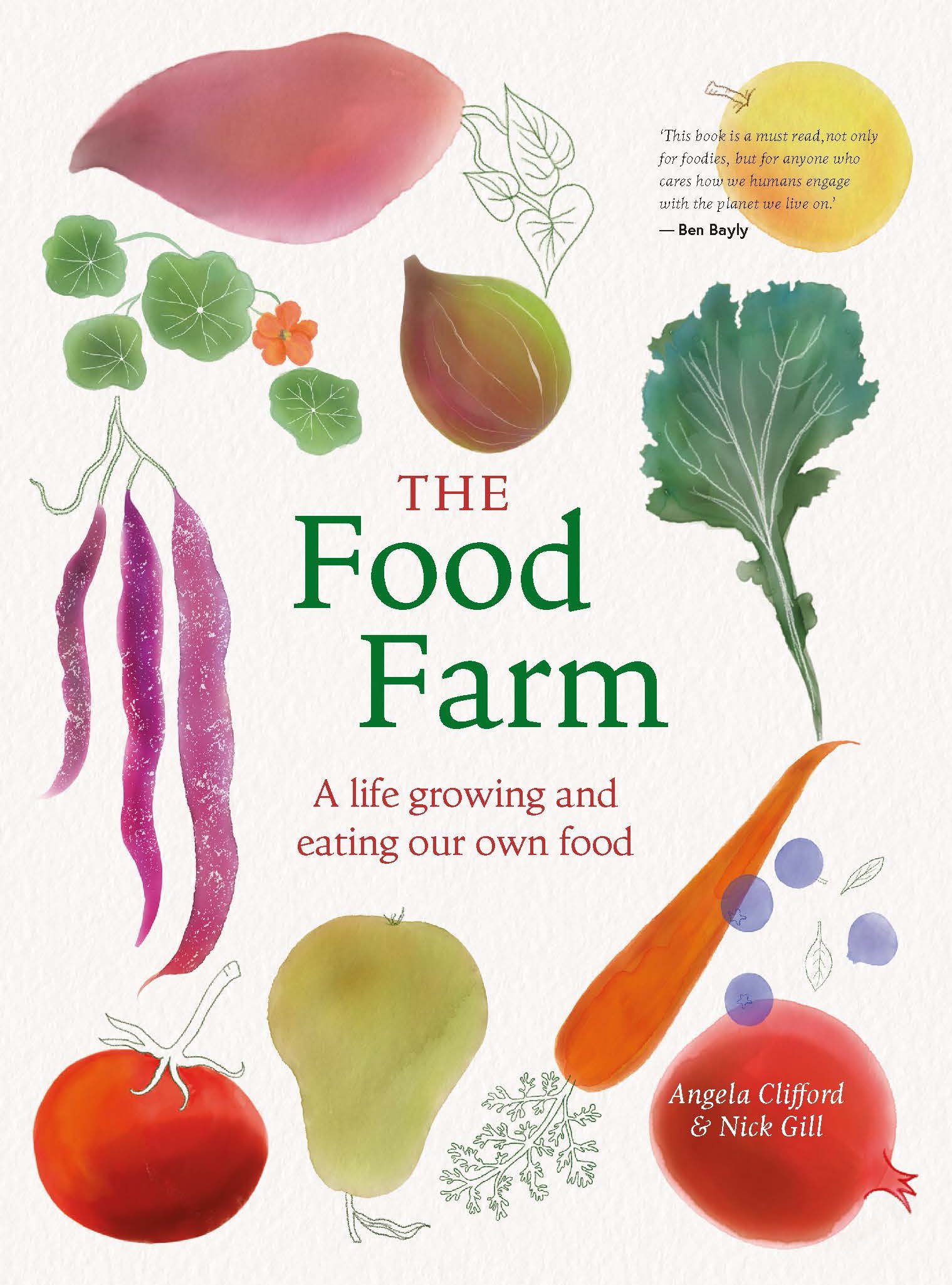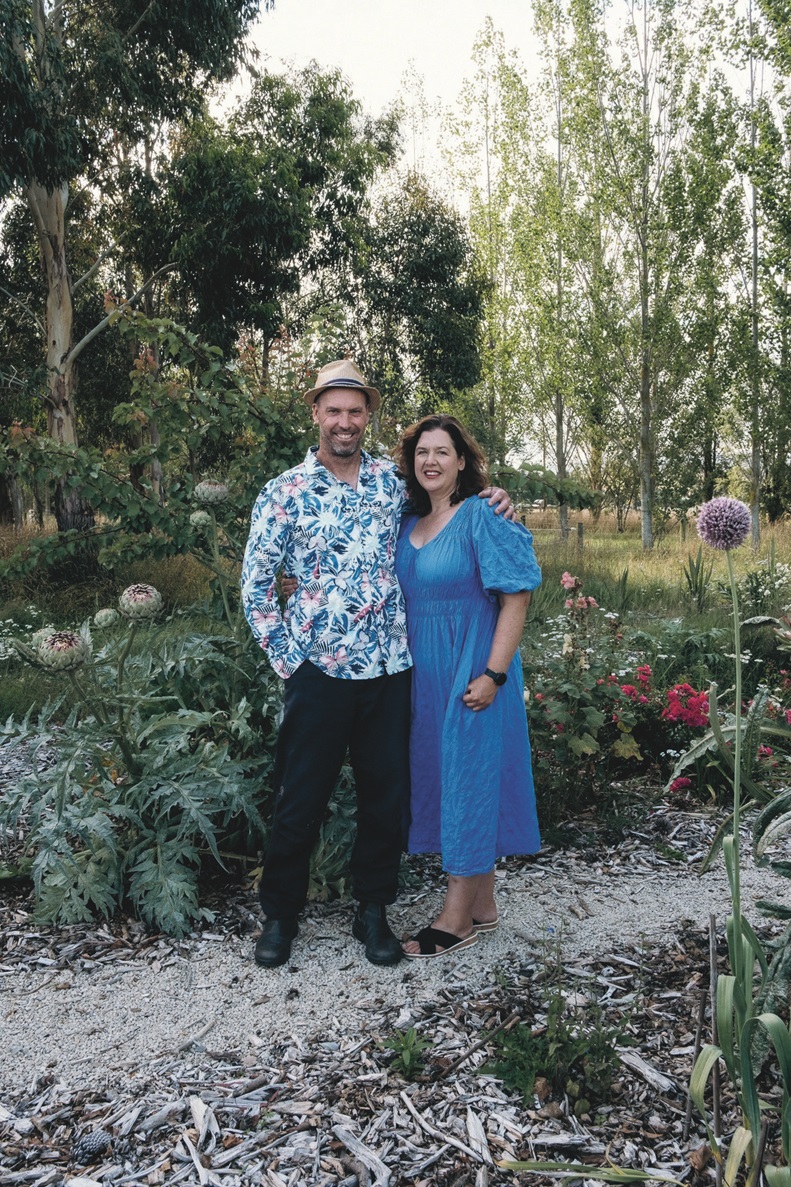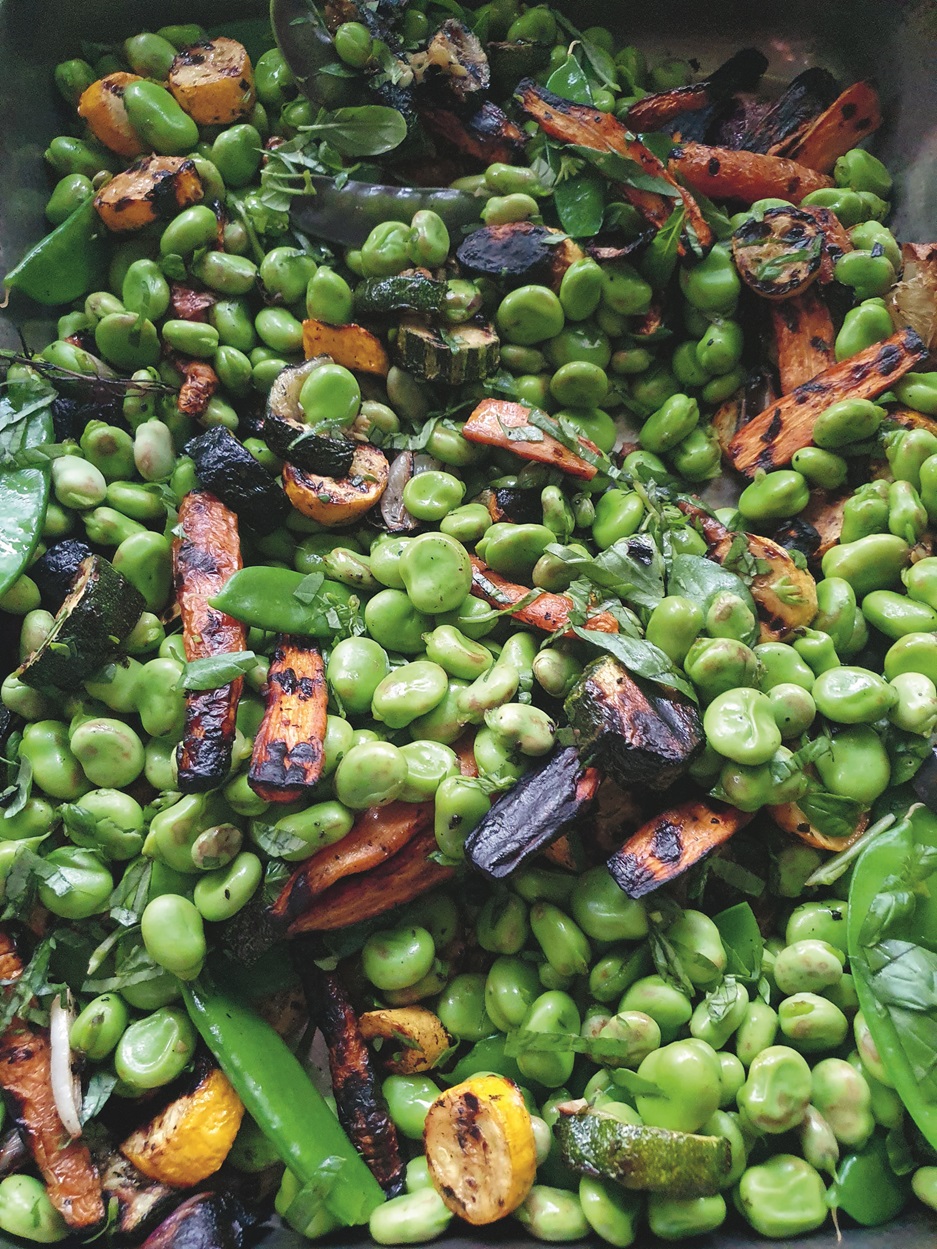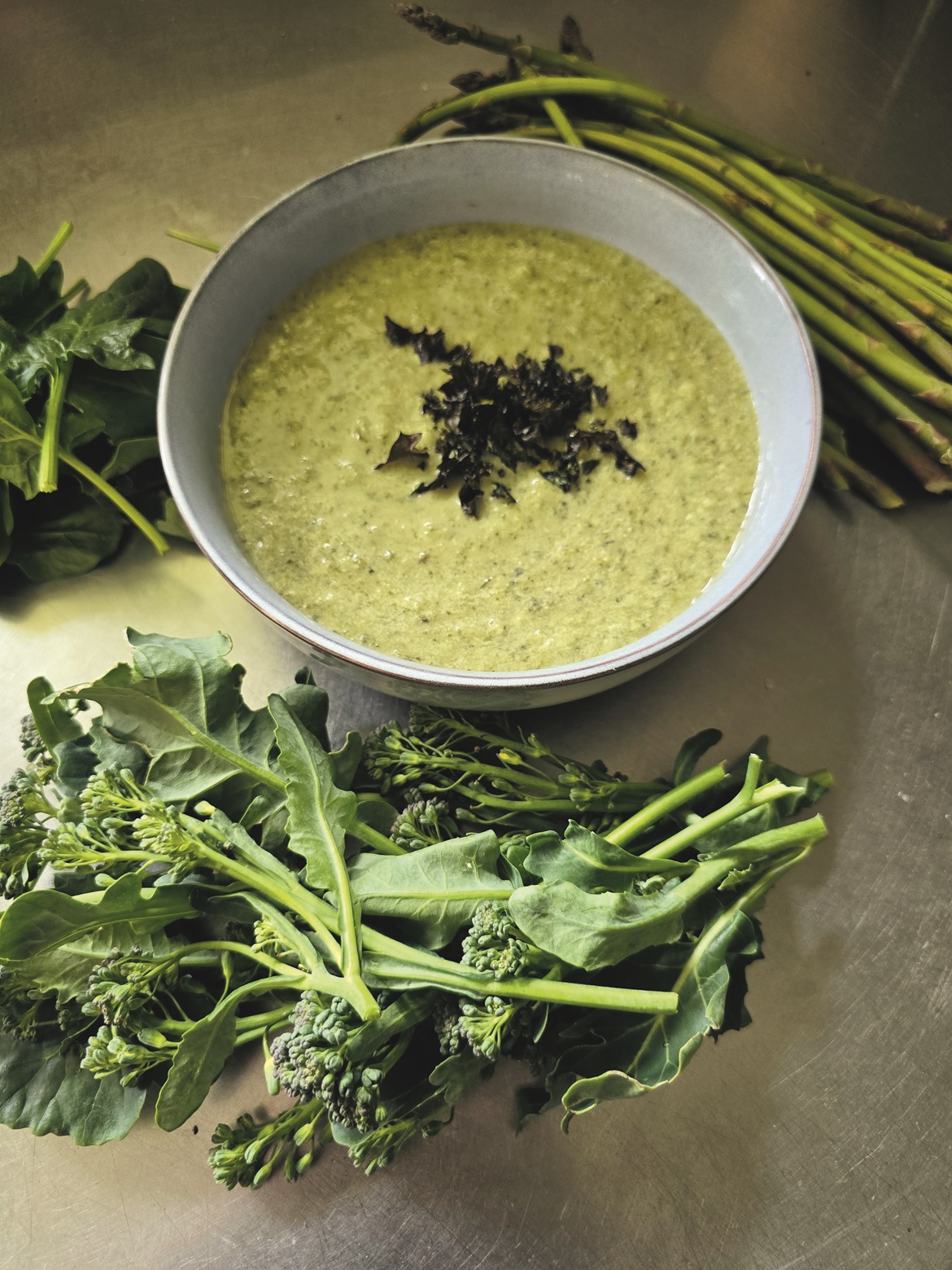
As the leader of Eat New Zealand — a not-for-profit promoting regenerative food systems, which is also dedicated to reconnecting people with the land and ocean through food — Clifford practises what she preaches.
She and husband Nick Gill, who grew up on a farm in South Australia, own 6.5ha of land in Broomfield, near Amberley in North Canterbury, which they have been cultivating using permaculture principles for the past 20 years. It feeds them, their three children, extended family, their dogs and animals and when they have excess, their community.
"From the moment we owned the Food Farm we were absolutely single-minded about throwing all our love and imagination into a place we could call home and raise a family."
It began with planting shelterbelts to protect them from nor’west winds and a bore so they could water their plants. They took it from there.
"I look back with pride on that decision. It was absolutely the right one. Without water and wind protection, nothing else would have grown on the property."
The Food Farm is their record of life and work on the land. When they bought the land it was just a few paddocks with a single tree on it.
With hard work they have transformed it by growing annual and perennial vegetables, berries and tree crops. They have two food forests, with more planned, and an orchard.

The couple, who were in the wine business, supplement this with going hunting for wild food in the mountains, oceans and edible plants foraged from in between.
The Food Farm is a seasonal diary about growing your own food, including fruit, vegetables, nuts, eggs, grains, dairy, honey, meat and wild food. Recipes are "from scratch", including harvesting and preserving.
The couple share ideas on how people can get the most out of their growing efforts. Their biggest lesson is that diversity is the key to success, as by mixing things up it confuses pests and increases the chances of something surviving in one place, even if it does not survive elsewhere.
"I’ve learnt so much more from my failings than from my successes. If I’m feeling defeated, I zoom out. This can allow some perspective and a chance to realise not all is lost," Clifford says.
Over the past 20 years they have had to come to accept there will be losses each year because of the weather. So they now plan for those losses, rather than see them as failures.
"This means plenty of succession planting in different parts of the farm, rather than one big area of crop."
The book
The Food Farm: A life growing and eating our own food by Angela Clifford and Nick Gill, photography by Angela Clifford and Nick Gill, published by Bateman Books, RRP $55.
 Broad bean salad
Broad bean salad

This salad can be eaten warm or cold. You’ll need a large bowl filled with ice and water to quickly stop the beans cooking.
Serves 4-6 as a substantial side
Ingredients
4 cups small, fresh, green broad bean seeds
1 small clove garlic
1 Tbsp flaky sea salt
¼ cup Greek yoghurt
2 Tbsp olive oil
1 handful of soft herb leaves, e.g. mint, parsley, chives, basil, lovage or tarragon, stems removed and finely chopped
Juice of 1 lemon
150g crumbled feta or Farm Cheese, to serve (optional)
Method
Bring a large pot of well-salted water to the boil. You want a rolling boil, because once you put the beans in the water you want it to quickly come back to boil. Boil for approximately 1 minute and fish out an average size bean to test. It should be tender but still have some bite. If you cook them too long they become floury and bitter.
Immediately drain the beans in a colander in the sink. Plunge the beans into the bowl of ice-cold water and stir through. After about 30 seconds they will have stopped cooking. We don’t want to leave them too long, otherwise they suck the cold water into the gap between the skin and the green seed inside. Drain well and set aside.
Peel and slice the garlic as finely as you can. You need to turn it into a paste by using a chef’s knife at quite a flat angle and pulling and dragging the edge of the blade across the garlic to smear it on to the board. Add the salt to act as an abrasive and continue doing this until you have a salty garlic paste.
Scrape the paste off the board and add to a small bowl with the yoghurt, oil, herbs and lemon juice. Stir to combine.
Mix the dressing with the beans and taste for acid/salt balance. Adjust as needed.
To serve, we like to tip the salad on to a shallow plate and scatter with more herbs. If they’re available, roasted spring vegetables are a delicious addition.
Note:
We often catch the boiling water drained from vegetables and tip it on to weeds growing in the path out from the kitchen as a form of weed control.
 FFF — Food Farm focaccia
FFF — Food Farm focaccia

One of the house rules of Wwoofing with us is that you have to cook a dish that represents who you are, or where you’re from, and write the recipe in the Wwoofer book. Over the years we’ve had some crackers and some forgettable dishes. Whichever part of the spectrum they land in, they’re always appreciated for the effort, thought, storytelling and break from the kitchen for the evening.
Part of our pitch on our Wwoofing profile suggests if you're into food, then we are for you! As such we’ve been blessed with more than one chef and plenty of fine cooks as Wwoofers.
One of the recipes that has sneaked into our own repertoire came from a young chef from Bristol, Kane Danaher. Kane was everything you’d expect a chef from Bristol to be.
Kane left us a focaccia recipe, and while we’ve changed it a bit over the years, we’ll give him the credit. We’re still in contact with Kane, and perhaps this book, and our version of the focaccia, might make it back to Bristol one day.
Serves 10
Ingredients
830g water
16g instant dry yeast (2 sachets; we use Edmonds Dry Yeast)
½ tsp sugar
180g olive oil
1kg local grain flour
25g fine salt
1 sprig of fresh rosemary, leaves picked
Flaky sea salt
Method
Mix 750g water, yeast, sugar and 100g oil in a jug and set aside.
In a stand mixer, mix the flour and salt with the hook attachment. Tip in the yeast mixture and mix for 5 minutes. Alternatively, mix in a large bowl with a sturdy spoon and a strong arm. This is a wet dough, so mixing by hand is tricky, but you can cover your hand with oil and use your hand like a stirrer if this is easier.
Tip the mixed dough into a large, oiled bowl, cover with an oiled plate and leave to double in size, about 2 hours in summer, longer in winter.
Take a standard, old-school roasting tray (about 35cm x 30cm x 7cm) and line with a large sheet of baking paper. Tip the dough into the lined tray and roughly spread out, but don’t handle it too much. Leave to prove, uncovered, for an hour somewhere warm.
Set up the oven with a rack in the centre and preheat to 250°C. Put the remaining 80g olive oil and 80g water in a jar with a lid that seals well.
Oil your fingertips and push into the dough nearly to the bottom of the tray. Just do it in a pleasing, random pattern so each hole is 4-5cm apart from its neighbour.
Vigorously shake the oil water mix in the jar so it emulsifies. You’ll know if the lid doesn’t seal well because you’ll flick it all over the kitchen! Tip the emulsion over the dough in the tray so it spreads over the entire surface and fills your finger holes. Finally, sprinkle the focaccia generously with rosemary leaves and flaky sea salt.
Place in the centre of the oven, close the door and turn down to 200°C. Bake for 50 minutes until golden brown. Remove from the oven and allow to cool slightly on the tray. Carefully lift on to a cooling rack and slide out the baking paper. The base of the bread will be quite oily, but that makes it moist and delicious. Allow to cool to almost room temperature before serving.
• Liquid measurements in grams (rather than mls) is correct.
Spring greens
While we’re busy in the milking shed, the hungry gap in the garden is ending. As the first spring greens are accelerating, crops like spinach and broccoli are ready to harvest, asparagus has arrived and perhaps the first broad beans.
If we’re lucky there might be the very first small green zucchini. We’re using up the last of the leeks before they all go to seed, harvesting some garlic tops and whenever there’s an opportunity to add some cream this time of year, were taking it.
Everything is now overwhelmingly green. By the end of the month, were starting to crave anything that’s not green, hanging out for the first splashes of colour in the garden and on the table. But at this moment, we have no choice but to embrace our inner Kermit.
When you have three small children and your only option is greens, you have to be creative. It’s at this moment that Shrek soup was born.
When Ruby was small, she was an early riser. Her particular favourite was 4.50am. Not quite night, not quite morning, brutal. Nick and I would take turns getting up and our solution was to put any of the Shrek movies on the TV for Ruby to watch, while we fell back to an uneasy slumber for an hour on the couch with her.
As a result, every song from every Shrek movie is stamped into my subconscious. Such was her fervour for Shrek that when faced with a green soup rejection moment, there was only one solution ... Shrek soup.
The secret is to not put too much of any one thing in, so the comment I can’t eat this because I don’t like ... is rendered ineffective.
The flavours are combined together and taste like a fresh spring soup rather than asparagus or broad bean soup!
 Shrek soup
Shrek soup

Take some time to get the base right as the flavours are mild. We bring richness with chicken stock and soured cream, but you could make a vegetarian option by substituting vegetable stock. Think carefully about the acid and seasoning as the final touch to bring the whole thing together. This soup is difficult to make in large quantities, thus it should hopefully be achievable for a productive spring garden without having to resort to a run to the shops.
Makes 2½-3 litres
Ingredients
2 large leeks
50g unsalted butter
3 Tbsp extra virgin olive oil
10 young garlic leaves (about 25cm long), washed and sliced 5mm thick
1 fist-sized bunch of asparagus, washed, base snapped off) and sliced into 25mm pieces
2 litres well-flavoured chicken stock
2 cups peas and/or broad beans (can be frozen)
4 cups spinach, washed
½ cup sour cream
Juice of 1 lemon
Salt and pepper
Ingredients
Slice the tops off the leeks but try to retain as much of the green part as possible as it’s very much edible. To clean, sit the leek vertically on the white base and, using a very sharp knife held horizontally, cut straight down the top until you’re cutting into the light green centre of the leek about 15cm straight down. Turn the leek 90 degrees and do another cut so it is held together by the tight structure at the base of the leek. In a sink or large bowl of cold water, invert the leek and plunge it up and down, squashing the crosscut top into the bottom of the sink. Really go for it! This flushes the dirt out well. Tap the leek on the edge of the sink to remove excess water then cut across the leek into 5mm slices.
Melt the butter and oil in a heavy-based saucepan over low heat. Saute the leeks and garlic leaves to cook them without browning, which could take up to 30 minutes. Add the asparagus and cook for another 5 minutes. Pour in the chicken stock and bring to a simmer.
Add the peas and/or beans and cook for approximately 5 minutes until the vegetables are tender. Finally, add the spinach, which will wilt immediately.
Remove from the heat and blitz with a stick blender. Add the sour cream, half the lemon juice and a two-finger pinch of salt. Season with pepper to taste.
Return to the heat and bring to just below a simmer. Taste for salt and lemon acid balance before serving. Place in front of small children, sing a Shrek song, and cross your fingers!








